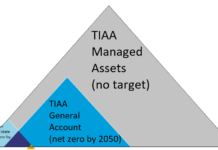In times like these of financial uncertainty, regulated utilities have traditionally been considered a safe haven. But that is changing. The Dow Jones Utilities Average was down 30% in 2008, vs. a 34% drop in the Dow Industrials. Not much of a safe haven.
In a recent interview, utilities analyst Daniel Scotto noted, that the utility industry offers "a lot less security" than it used to. His reasoning is based mainly on the fact that the regulated portion of utility company’s business is smaller than it has been in previous recessions, making them vulnerable to lower growth (or even contracting) energy demand. Scotto forecasts electricity demand growth at "no more than 0.2% this year, and he sees a chance that the U.S. electric utility industry could experience negative growth for the first time since the 1950s.
Because of my work as an expert witness helping clean energy groups with utility regulation, I fear that even the regulated portion of utilities’ business may be in jeopardy. In November, I wondered if utility Demand-Side Management programs could remain effective with the phase-out of the incandescent light bulb, but that may be only the tip of the iceberg. I was recently asked to advise an anti-coal, pro renewables advocacy group in a rate case. Looking at the evidence, I expect that utility regulators may begin to slash authorized returns on equity.
Authorized Return on Equity (ROE)
Because they are monopolies, utility regulators cannot rely on the market to keep utilities from making excess profits. Instead, they set rates calculated to let utilities make returns on equity comparable to what other companies with similar risk profiles make in competitive industries. Determining what this might be is complex, and analysts use several models to calculate what might have been. ROEs can be determined using the Capital Asset Pricing Model, Discounted Cash Flow models, Equity Premium model, the method of Comparables, and various Risk Factor models.
All of these calculations have common elements: they are based on historical data and analysts’ expectations for the stock and bond markets. Over the (very) long term, publicly traded companies total returns should be approximately equal to ROE. Utility regulators turn this simple relationship on its head, and, after performing considerable manipulation to tease out other factors unique to the business of the utility in question, set authorized ROE based on observed and expected long-run market appreciation.
Crash
In regulatory practice, "long-run" usually means ten to twenty years of returns. What happens when the market falls 34% in one year, and the continuing weakness of the credit markets causes analysts to revise their long term expectations for the market downward? Over a 10 year span, a 34% drop will reduce the average annual return by 3.4%, even without any drop in expected growth. Over a 20 year period, that same drop will reduce annual growth by 1.7%.
Many regulators may look at these lower "long-run" returns, and cut the authorized ROE by 1-3%, something which would soon pass through to the utilities’ bottom lines, and hence impact share prices significantly.
It’s Different This Time
While historically utilities have done well in a downturn, the market models described above were not developed until the 1960s and 70s, let alone used in utility regulation. Hence there is little historical precedent to know how regulators will behave. Will they look at the need to invest in transmission and renewable energy infrastructure, and decide that current authorized returns will help utilities raise the necessary capital? Or, will they look at the economic plight of ratepayers, and decide that, if the models say that ROE should be cut, why not cut ROE and let ratepayers keep some money in their pockets?
I’m not intimately familiar with each state regulator’s decision-making process, so I don’t know which utilities are likely to be impacted, nor when. I’ve decided not to take the gamble, and have sold nearly all the utilities in my portfolio.
The decision was made easier by my unrelated resolution to reduce my total number of holdings, which I mentioned in my article Ten Green Energy Gambles for 2009. At the time, it didn’t occur to me that regulated utilities might also be gambles.
Tom Konrad, Ph.D.
DISCLAIMER: The information and trades provided here and in the comments are for informational purposes only and are not a solicitation to buy or sell any of these securities. Investing involves substantial risk and you should evaluate your own risk levels before you make any investment. Past results are not an indication of future performance. Please take the time to read the full disclaimer here.







